History
Mark di Suvero was born in Shanghai, China in 1933. At the mere age of eight, he immigrated to the United States in 1941. From there, Mark proceeded to attend the University of California, Berkeley in which he graduated with his BA in Philosophy. When his college days came to a close, he decided to pursue a career in sculpture art. As an artist, he used his creations to express his beliefs on controversial topics. He was a social justice activist and protested against many events which led to many controversial endings. Even though his time in the artist field was new and innovative, he became recognized as a huge influencer in the Abstract Expressionist era.
Suvero’s work focuses mainly on large architectural-scale sculptures that incorporate raw industrial materials. Some of these materials included structural steel, scrap metal, and wooden timbers from timbers from demolition buildings. His art leans heavily on abstract expressionism which is aimed towards subjective emotional expression through abstract art. His work has been featured all over the world including Paris, California and New York City. Through this he was able to become a founding member of the Park Place Gallery.
Built in 1975, Suvero’s For Handel is 27 feet tall and bright red in color. His intent is to connect art with music in a dedication piece to the composer George Frideric Handel, and he does so by creating a bright, movement-based sculpture made of industrial steel l-beams. He also achieved this connection between music and art by centering the sculpture in the plaza across from the performing arts center. The way in which it measures this building up in size shows its visual power and representation of the power of sound in connection to the power of visualization.
Viewer Interpretation
“Mosquito” -Adriana
“Reminds me of a giant crane” -Jessica
“I see a flame…it’s like the flames flickering with the student’s passion on campus” -Mike
“Make it bigger and then have little baby ones next to it” -Areya
In creating this work, I aimed to bring Areya’s vision to life by depicting the fun and playful vision she described to me. I decided to add in the smaller “baby” versions of the sculpture, show a gigantic slushie straw leaning against it, and use silly pictures of Areya to place at the top, representing her silly and lively interpretation of For Handel.
– Casey
“…beams at the top extending further into the sky as if they’re shooting up into infinity” -Alex
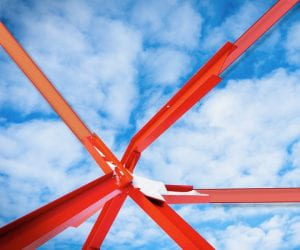
Alex Johnson looks at the sculpture and thinks of “a bunch of rays shooting out in different directions” and could envision “the beams at the top extending further into the sky, as if they’re shooting up into infinity.”
After hearing about Alex Johnson’s interest in the extension of the steel beams past their current ending points, I decided to bring this to life by creating colorful rays extending from the sculpture and into the sky. I made them light and slightly transparent in color in order to give off a sense of “laser-like” imagery, a light that doesn’t have a sharply angled cut off point like the beams. By extending them to the end of the photograph it gives the illusion of them being infinite.
– Max
“It did remind me of construction, sort of visceral and metal an internal construction, like a skeleton of something especially with the red,” said Shugart.
Conclusion
Though Mark di Suvero was disliked at first for defying tradition of the abstract expressionism era, he became a key figure in the evolvement of expressionism. Mark is one individual who proves that unconventionalism can lead to a reinvention of art and new insight into what is considered art as time passes. We can all learn something from Suvero’s bravery to face criticism in the name of art. Using his art to advocate for social justice and peace, he has demonstrated amazing qualities of a successful artist in the 21st century.
Writer’s Statement
My name is Kristiana Dang. I am a freshman here at Western Washington University. I took Art 109 to learn learn about the art all around the world and their impact on our society as time progresses. I am extremely thankful to have gotten this sculpture as the one we needed to research about. Whenever I would walk past this sculpture, I would stare in awe at its enormity and striking presence. If I were to climb on it I would set up a hammock and stare at the oceanic view until sunset.
My name is Max Gleiberman and I’m studying Photojournalism at Western Washington University. My passion is photography which has helped me understand and appreciate art as a whole. I’ve realized that all types of art can help influence or inspire my photography and there’s always something to learn from all aspects and genres of art. For this project I was happy to be assigned For Handel since it’s one of my favorite pieces on the campus and have personally enjoyed photographing it through my personal perspective. For the project our group decided to get people’s interpretations/feelings about For Handel. It was interesting to hear the different perspectives people had on it and seeing in the world of art, there is no right and wrong but rather it’s in the eye of the beholder to define what art is.
My name is Casey Auberle. In response to this assignment and my group’s collective decision to gather outside perspectives on For Handel, I was excited to work with unique visions in the creation of the interpretations. By taking the time to not only hear one’s perspective on a subject, but also delve into portraying it, I believe it diversified my work and encouraged me to think of the sculpture in a way I would not on my own. This work really emphasizes the subjectivity of art and the importance of exposure to others views in order to expand your own.
Bibliography
- Suvero, Mark Di, and Barré François. Mark Di Suvero: Dreambook. University of California Press, 2008.
- Lippincott, Jonathan. “Sculpture in the Landscape.” The Paris Review, 16 May 2016,
- Joyce, Erin, et al. “Why Mark Di Suvero Chose Public Art.” Hyperallergic, 19 Feb. 2019, hyperallergic.com/480932/why-mark-di-suvero-chose-public-art/.
- Mark Di Suvero. (n.d.). Retrieved May 1, 2019, from http://www.spacetimecc.com/about/
Post Created by:
Kristiana Dang : Research, Writing
Casey Auberle: Research, Interviewer
Max Gleiberman: Photographer, Interviewer

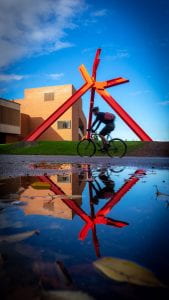
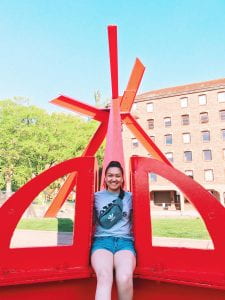
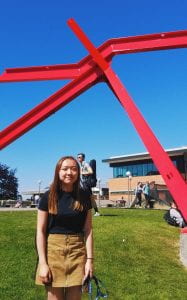
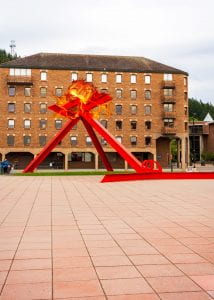
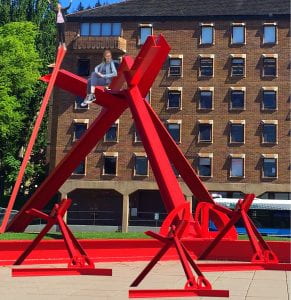
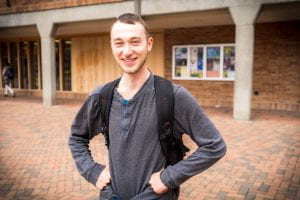
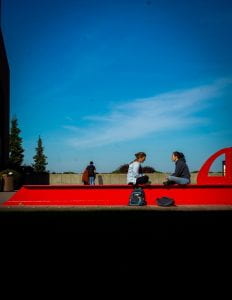
Leave a Reply